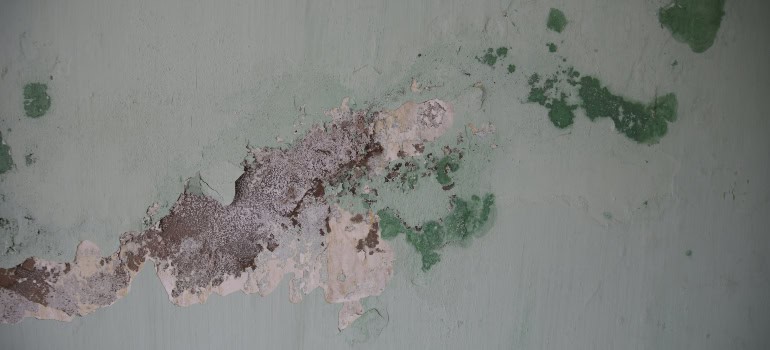Everyone finds moving difficult to some extent. However, for hoarders, it’s one of the biggest nightmares they can think of. Namely, hoarding is a complex psychological condition that requires understanding, patience, and strategy. If you want to help a hoarder move, you’ll need some help yourself. Luckily, you’re about to learn ten key tips that can make this enormous task easier for you. Whether you’re a family member, friend, or professional organizer, this guide will equip you with the knowledge and empathy needed to succeed.
Hoarding 101
Hoarding is a complex disorder characterized by the persistent difficulty in parting with possessions. Also, the actual value of those possessions is not important. This behavior often leads to cluttered living spaces, distress, and impairment in daily functioning. To effectively help a hoarder move, it’s crucial to understand the underlying aspects of this condition:
- Psychological impact. Hoarding is often associated with other mental health disorders, such as depression, anxiety, or obsessive-compulsive disorder.
- Emotional attachment. Individuals with hoarding disorder tend to form strong emotional attachments to a wide range of items. They manage to see value where others may not.
- Indecisiveness. A common trait in hoarders is the difficulty in making decisions, especially about discarding items.
Interestingly, hoarding is not limited to just physical objects. Digital hoarding, where individuals accumulate large quantities of digital files and emails, is also increasingly recognized.
As someone trying to help, you must understand these aspects to approach the moving process with empathy and effectiveness. The strategies you use need to be tailored to the individual’s needs and challenges or the whole endeavor will be in vain.
To help a hoarder move, establish trust and communication
Building a foundation of trust and open communication is essential when assisting a hoarder with moving. This starts with acknowledging their feelings and concerns about the move. You’ll need to provide reassurance that their needs and preferences will be respected throughout the process. Establishing this trust can make the hoarder more receptive to accepting help and making necessary decisions.
Effective communication involves clear, patient, and non-judgmental dialogue. It’s important to regularly discuss the moving plan, listen to the hoarder’s worries or suggestions, and adjust plans when necessary to accommodate their comfort levels. For example, if the move involves relocating to a different state, discussing options for interstate movers Northern Virginia offers, can provide reassurance about the logistics and safety of transporting their belongings.
Always bear in mind that the goal is not to take over the process but to collaborate with the hoarder. This approach helps in maintaining their sense of autonomy and dignity. Regular check-ins and updates can help keep the hoarder engaged and informed. That will make the moving process more manageable and less intimidating for them.

Create a good and detailed plan
A well-thought-out plan is the backbone of a successful move, especially in the context of helping a hoarder. Firstly, set a realistic timeline for the move, considering the hoarder’s pace and emotional readiness. Additionally, break down the moving process into smaller, manageable tasks, and set clear goals for each stage. This approach reduces the feeling of being overwhelmed and provides a sense of accomplishment as each task is completed.
Moreover, don’t try to keep the hoarder out of the planning process. Their input not only ensures that their needs and concerns are addressed but also gives them a sense of control over the process. Discuss options for moving day, including whether to enlist the help of friends, family, or professional movers. For instance, hiring movers Quantico VA residents trust can offer the necessary logistical support. This help is especially useful if there are large, bulky items or if the hoarder feels anxious about the physical aspect of moving.
Also, don’t forget to plan for contingencies. Unforeseen challenges, like weather changes or emotional setbacks, can affect the moving schedule. Building flexibility into your plan can help accommodate such issues, making the moving experience less stressful for everyone involved.

To help a hoarder move, always put safety first
When preparing for this complex task, safety is a paramount concern. Hoarded environments can pose various risks, from fire hazards due to cluttered spaces to health risks from mold or pest infestations. Here’s a checklist to ensure a safe moving process:
- Hazard identification. Carefully assess the home for potential hazards like blocked exits, piled items that could fall, or broken appliances.
- Health risks. Look out for signs of mold, mildew, or pest infestations which might require professional remediation.
- Protective gear. Use gloves, masks, and sturdy footwear to protect against dust, allergens, and other harmful substances during cleaning and moving.
Addressing these safety concerns before the move will both protect everyone involved and help make the moving process less stressful.

Sort and organize with care
Sorting and organizing the possessions of a hoarder is a task that requires sensitivity and patience. Begin by categorizing items into distinct groups: those to keep, donate, discard, or sell. It’s important to involve the hoarder in every decision respecting their attachment to their belongings. Additionally, you’ll need to find a way to help them make informed choices.
For items marked for donation, consider using a delivery service Northern Virginia provides. Such services can assist in transporting goods to local charities or donation centers, easing the logistical burden. This approach not only helps in decluttering but also provides the hoarder with a sense of contribution and fulfillment. They will know their items are going to a good cause.
When organizing the items to keep, implement a system that is easy for the hoarder to maintain. Label boxes and storage bins clearly, and create an inventory list if necessary. In fact, this organized approach can help reduce anxiety and ensure a smoother transition to their new living space.

Be extra careful when dealing with sentimental items
When you help a hoarder move, one of the most challenging aspects is addressing sentimental items. These possessions often hold significant emotional value and deciding what to do with them can be particularly difficult for the hoarder. It’s important to approach these items with extra sensitivity and patience.
A useful strategy is to create a separate category for sentimental items during the sorting process. Allow the hoarder to take their time when reviewing these objects, and discuss the memories and feelings associated with them. This can help in making smart decisions about whether to keep, donate, or discard these items.
In some cases, it might be practical to consider temporary storage solutions for sentimental items that the hoarder is not ready to part with but cannot keep in their new space. For example, using a storage Lorton VA facility can provide a safe and accessible option for keeping these items. This solution offers a middle ground, allowing the hoarder to move forward with decluttering while still having access to their cherished belongings.
Cleaning and repairing
Before the move, it’s essential to address the cleanliness and condition of the hoarder’s current residence. Start by identifying areas that require deep cleaning or repairs. This can range from addressing mold and mildew issues to fixing broken fixtures or plumbing. Ensuring the home is clean and safe not only facilitates a healthier moving process but also respects the property, whether it’s being sold, rented out, or returned to a landlord.
In some cases, the scale of cleaning and repair work may be extensive. If this task seems extra difficult, consider enlisting professional help. Hiring local cleaners, handymen, and even local movers Northern VA residents love for heavier tasks can significantly reduce the workload. With their help, you can proceed to the next task at hand.
For the hoarder, seeing their home restored can be a cathartic experience, potentially easing the emotional transition of moving. It’s a tangible step towards a fresh start, reinforcing the positive aspects of change. As always, involve the hoarder in these steps to ensure they feel respected and in control of the process.
Organize the moving process in detail
When the moving day arrives, it’s crucial to ensure that everything goes as smoothly as possible. Start by revisiting the plan you’ve made with the hoarder, making sure that all parties are on the same page.
In terms of logistics, consider the volume and nature of the items to be moved. If the task seems overwhelming, hiring a professional moving team can be a practical solution. For instance, a packing service Northern Virginia caters to can offer specialized assistance. With this type of help, the items will be safely and efficiently packed. These services can also help streamline the process, reducing the physical and emotional strain on both you and the hoarder.
Moreover, coordinating with friends, family, or volunteers on the moving day can provide additional support. Their presence can offer emotional comfort to the hoarder and extra hands to make the move more manageable.
After you help a hoarder move comes the settling-in phase
The period immediately following the move important for a hoarder’s adjustment to their new environment. This phase involves more than just unpacking. The hoarder needs to acclimate to a different space and possibly a new way of living. Therefore, it’s essential to continue offering support and understanding during this time.
To do that, you can make sure that essential items are unpacked first, creating a sense of familiarity and comfort. Once the Northern Virginia movers or some other relocation experts have brought the hoarder’s belongings into their new home, be there to make sure the items are put in the right place.
Furthermore, encourage the hoarder to personalize their new space. This might involve arranging furniture, hanging pictures, or setting up a special area with their favorite items. Such actions can foster a sense of ownership and comfort in the new environment.
Also, you should discuss strategies to prevent a relapse into hoarding behavior. This might include regular check-ins, continued therapy, or joining support groups. Remember, the move is just one step in a longer journey towards healthier living habits.
Seek advice from professionals
Recognizing when to seek professional help is another important aspect of this journey. There are situations where the challenges of hoarding transcend the scope of family and friends’ assistance. This is where professionals such as therapists, professional organizers, and specialized cleaning services can offer invaluable support.
Therapists with experience in hoarding disorders can provide emotional and psychological support. They can help the hoarder understand and cope with their feelings throughout the moving process. On the other hand, professional organizers can assist in devising a more structured approach to sorting and decluttering. In some instances, particularly when the volume of items is overwhelming, engaging a professional moving team may be necessary. For example, hiring movers Woodbridge VA residents of that area have at their disposal, could provide additional logistical support. In many cases, it is needed to manage a large-scale move efficiently and sensitively.
Also, it’s important to introduce the idea of professional help in a respectful and non-judgmental manner. Emphasize that seeking help is a sign of strength, not weakness, and can be the key to making the move a success.

Helping a hoarder relocate doesn’t have to be terrifying
To help a hoarder move, you’ll need to understand this person’s struggles from their perspective. They will be going through an emotional journey. Therefore, assisting them demands patience, understanding, and careful planning. The various strategies and tips mentioned here can be invaluable in this delicate process. Bear in mind that each step taken should be geared towards not only the physical aspects of moving but also addressing the emotional and psychological challenges that come with hoarding. For that reason, approaching this situation with empathy, respect, and a willingness to understand the complexities of hoarding is paramount. Also, don’t forget to seek additional resources and professional support when necessary, as these can help navigate this challenging but rewarding journey.


